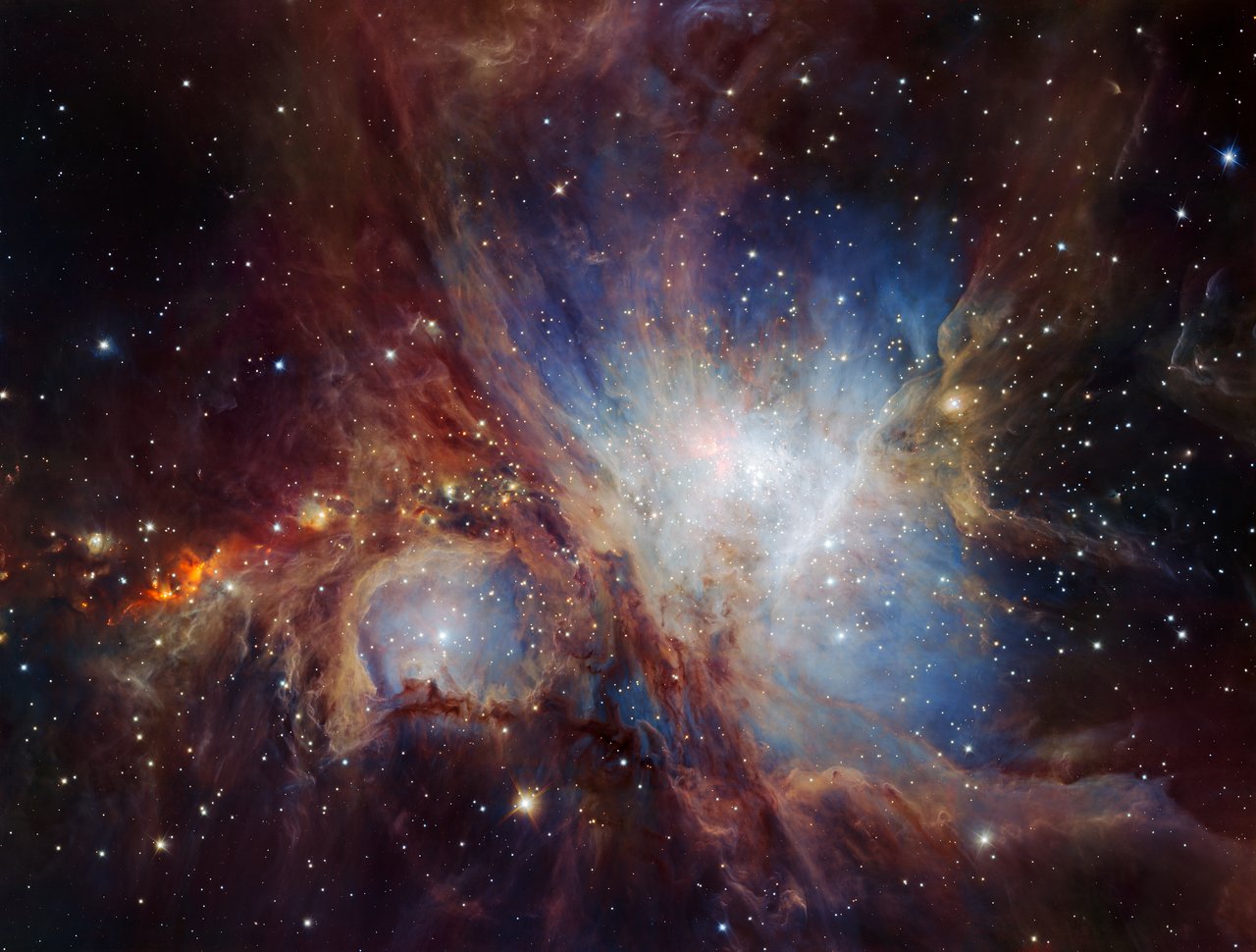General Discussion
Related: Editorials & Other Articles, Issue Forums, Alliance Forums, Region ForumsThis Deepest View Ever of the Orion Nebula Reveals Hidden Objects
By Sarah Lewin, Staff Writer | July 12, 2016 07:00am ET
Video:
http://www.space.com/33392-orion-nebula-deepest-view-yet-photos-video.html?utm_content=bufferc220f&utm_medium=social&utm_source=plus.google.com&utm_campaign=buffer#ooid=c3NW1vNDE6BgLytnbsOwq16muggBc29a
A new view of the Orion Nebula, the "deepest and most comprehensive view ever," reveals a preponderance of low-mass, planet-size objects in the famous star-forming region.
The new images, which you can tour in this awesome new video, use infrared data from European Southern Observatory's (ESO) Very Large Telescope to document the nebula's thick, glowing cloud of gas. With the hawk-like gaze of the telescope's HAWK-1 camera, researchers found 10 times more planet-mass objects and nearly planet-mass failed stars called brown dwarfs than ever seen before.
"Understanding how many low-mass objects are found in the Orion nebula is very important to constrain current theories of star formation," Amelia Bayo, co-author on the new paper, said in a statement. "We now realize that the way these very low-mass objects form depends on their environment." Bayo is an astronomer at University of Valparaíso in Chile and the Max Planck Institute for Astronomy in Germany. [The Splendor of the Orion Nebula (Photos)]
 ?1468284605?interpolation=lanczos-none&downsize=*:1400
?1468284605?interpolation=lanczos-none&downsize=*:1400
The Orion Nebula, which forms the middle "star" on the sword of the Orion constellation, is an enormous star-forming region located about 1,350 light-years from Earth. As its clouds of gas collapse inward to form stars, the new stars' ultraviolet radiation ionizes the gas around them and causes the nebula to glow. (It's visible from Earth with the naked eye, and spectacular in a telescope.)
http://www.space.com/33392-orion-nebula-deepest-view-yet-photos-video.html?utm_content=bufferc220f&utm_medium=social&utm_source=plus.google.com&utm_campaign=buffer
COOL STUFF!
Peace,
Ghost
longship
(40,416 posts)It's the sword in Orion. It is bright enough to see without magnification, naked eye.
The coolest thing in the nebula is the Trapezium, at the core of the nebula.

A well known object by all visual astronomers. The question is. Can you split the Trapezium with your scope?
R&K
Ghost in the Machine
(14,912 posts)... telescope. If so, I had it blown up on a different computer, and I like to play "How many objects can you find in this photo" with these...
In the picture you posted, to the left of the word "Trapezium", I see a 'grim reaper' looking face and, where the bright spot is where the arrow points to and the 2 lines point to, it looks like a horse's head, with a neck going back, transforming into what looks like an Eagle's neck, then going down into wings and legs. (I have a very vivid imagination). If you look at the large version of the picture I posted, you can clearly see a skull on the right edge, between a 1/4 and a 1/3rd way down... I have not taken the time to look too closely yet, as I need to get to sleep soon (good luck to me on THAT one! lol), but will find the time over the next few days to fully check it out.
"A well known object by all visual astronomers. The question is. Can you split the Trapezium with your scope?"
I really can't answer that, as I don't even have a scope and my very novice experience as ANY kind of "astronomer" is merely limited to sitting outside at night and staring up into the sky, 'star-gazing'. I live way out in the country, and have some amazing views. We have a GREAT view of the Space Station this time of year, and I have actually seen its boosters light up as it changes positions. I DO love these pictures from the rovers, Space Hubble, and other telescopes, though. They are absolutely stunning!
Peace,
Ghost
longship
(40,416 posts)My recommendation. Get some good binoculars and a lawn chair. Lay back and take it all in.
My best to you.
I have a 10" Dobsonian mounted reflector. I don't take it out much these days. But it is an awesome scope. It's big and heavy. Too bad.
Ghost in the Machine
(14,912 posts)for now, I can enjoy just looking.
Peace to you and yours,
Ghost
Quantess
(27,630 posts)K and R